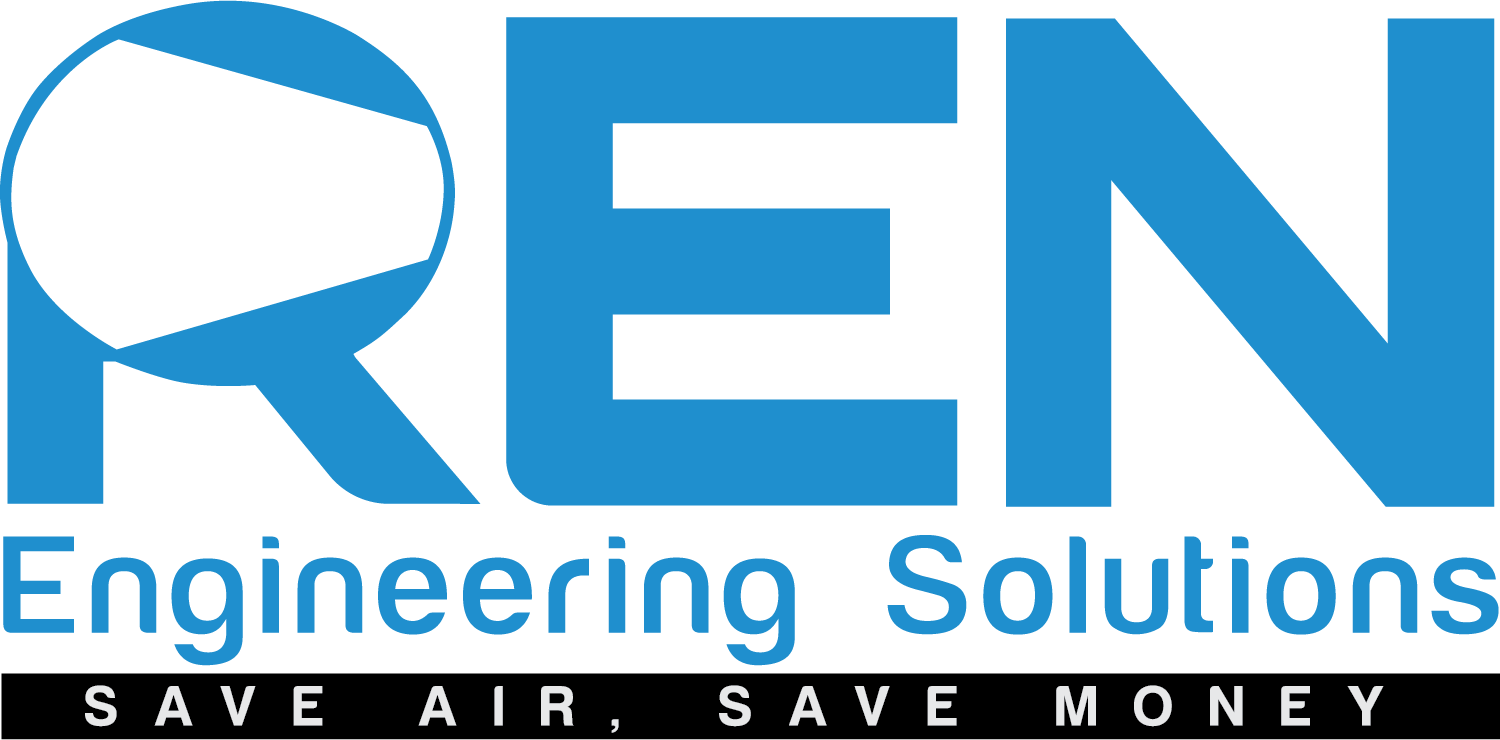We all know the value of electric, water and gas but what about compressed air? Your compressed air system has an annual cost and deserves to be treated as a cost center. Compressed air carries a significant value and deserves to be a cost center with aggressive annual efficiency planning.
Unfortunately, several misconceptions about how to reduce energy costs through increased compressed air efficiencies have prevented many industrial operations from taking control of their compressed air energy costs. There are 2 main focuses about compressed air systems that can begin to reduce expenditures, improve the reliability of your systems and generate savings for future equipment improvements. You can look at energy savings in the compressor motors but generally speaking this is not an area where savings can make a difference. A focus on the demand side of the compressed air system is where many efficiencies can be gained. A focus on leaks, storage, pressure and inefficient use are generally simple and inexpensive to address.
Increasing the pressure isn’t always the answer. In fact, frequently it is not. An efficient compressed air system is characterized by stable pressure levels. Steady pressure levels are achieved by addressing two things: air demand patterns and the minimum acceptable pressure level required for reliable production. Unfortunately, many operators who fail to properly diagnose the causes of system problems simply increase pressure to improve performance. Arbitrary increases to the pressure without understanding the root causes of performance issues can lead to increased energy costs. An audit completed by your compressed air specialist will reveal which aspects of your compressed system can be fine-tuned in order to reduce energy costs and increase reliability. Use of the “Six Steps to Optimizing Your Compressed Air System” will help achieve your goals for cost savings and efficiencies.

Begin with establishing a baseline for your system and learn what your typical air use looks like. This can be done with a flow meter installed at the compressor outlet. A flow meter is also useful at each machine or process demanding compressed air because they can indicate if a machine or process is operating atypically and consuming more air than usual.
An estimated 30% of compressed air produced by industrial air compressors is wasted in inefficient compressed air systems. Approximately 30% of the air produced for industrial applications ends up being lost through leaks, inappropriate use and pressure loss. The use of EXAIRs’ model 9061 Ultrasonic Leak Detector will enhance your efforts in finding leaks.
Choose engineered products to apply compressed air, these product have a focus on efficiency and outperform commercial products which do not concern themselves with air reduction.
When moving around your facility, look for applications of compressed air which can be turned off when personnel are on break or can be turned off in between parts. This step is very simple and can reap big savings.
Be sure to store compressed air close to high demand applications, this will prevent peaks and valleys in your compressed air demand which contributes toward less maintenance for your compressor.
Also lower your pressure at compressed air points of use. Keeping the pressure to a minimum pressure for a successful application can also help keep system wide pressure to a minimum, which will increase lifetime of your compressor.
The good news is that, in most cases, lower energy costs are completely attainable for industrial operations that have not optimized their compressed air systems. To begin saving please contact REN about compressed air products that can lower your compressed air costs today.
(Courtesy Eric Kuhnash-EXAIR)


One Reply to “Compressed Air – The Fourth Utility”
Hey, my brother is searching for Energy Efficient Compressors to increase the effectiveness and efficiency of his home’s air conditioning system. He wants to lower his energy costs and help the environment by employing energy-efficient compressors. Starting with creating a baseline for your system and learning about your average air usage, which can be done with a flow meter put at the compressor outlet, would be helpful for him.
https://www.energymachineryportlandme.com/